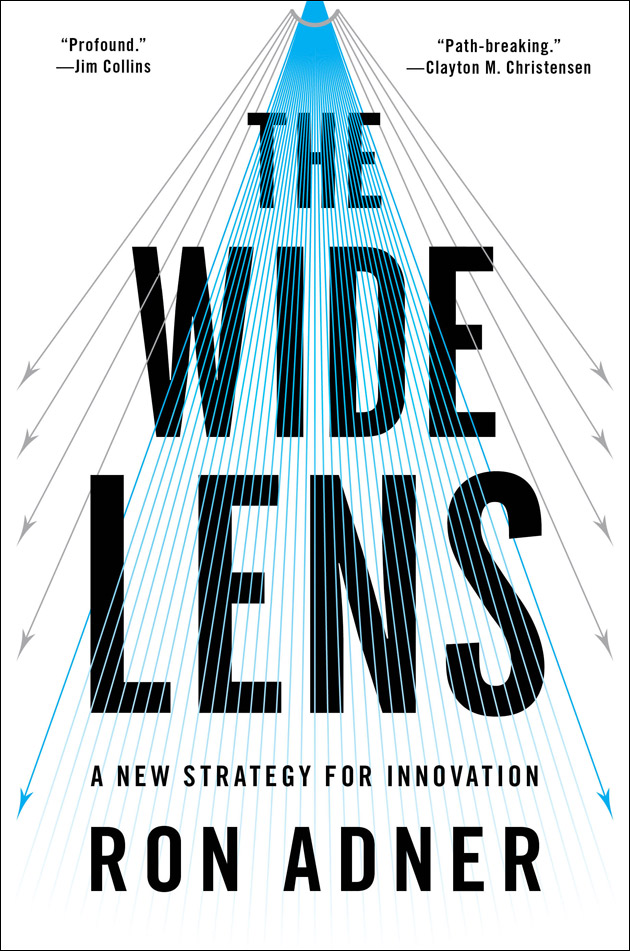 When it comes to innovation, common sense dictates that if you develop a great product it will be successful. But history is littered with great products that never quite made it, from electric cars to inhalable insulin to any e-reader that came out before the Kindle. So why do some great innovations succeed while others fail?
When it comes to innovation, common sense dictates that if you develop a great product it will be successful. But history is littered with great products that never quite made it, from electric cars to inhalable insulin to any e-reader that came out before the Kindle. So why do some great innovations succeed while others fail?According to author Ron Adner in his book The Wide Lens, the reason doesn’t lie with the innovation itself. Instead, many companies overlook two important risks while taking an innovation from concept to reality, and these blind spots can doom the product before it even gets out of the gate. The first is “co-innovation risk,” or the failure to understand that your innovation depends on the innovations of others. Consider the development of 3G phones. In the early 2000s, Nokia developed the first 3G phone, promising fast data speeds, video streaming and all the frills we’ve come to expect. But the content providers and data networks were not ready, and the phone ended up being an expensive 3G paperweight.
The other blind spot comes from “adoption chain risk,” the failure to understand that other partners need to also adopt your innovation before it can reach the end consumer. Digital cinema may be a great idea that saves money for movie makers and promises an improved viewing experience for moviegoers, but if movie theater owners do not purchase expensive digital projectors, the film will never reach an audience.
They key is to look at your innovation’s ecosystem with a wide lens to see all the components—not just the ones you control—that will go into making it a success. It’s the kind of strategy that made Amazon’s Kindle more successful even though Sony entered the market two years before it. Amazon realized that the hardware was only part of the problem; the company also had to get publishers on board to provide content and give consumers an easy way to acquire it. It is this wider view that separates the winners from the losers. Because as Adner points out, “What you don’t see can kill you.”
